Growing Romanesco Cauliflower might sound intimidating, but trust me, with a few clever tricks and a little DIY spirit, you can cultivate this fractal beauty right in your own backyard! Forget those bland, store-bought veggies; imagine impressing your friends and family with a homegrown Romanesco, a vegetable so stunning it looks like it belongs in a museum.
For centuries, gardeners have been captivated by the unique, almost otherworldly appearance of Romanesco cauliflower. Originating in Italy, this vibrant green vegetable is more than just a pretty face; it’s packed with nutrients and boasts a delightfully mild, nutty flavor. But let’s be honest, getting it to thrive can be a bit of a challenge. That’s where these DIY hacks come in!
Let’s face it, nobody wants to spend hours toiling in the garden only to end up with a disappointing harvest. Whether you’re a seasoned gardener or just starting out, these simple yet effective DIY tricks will help you overcome common hurdles and unlock the secrets to successfully growing Romanesco Cauliflower. From soil preparation to pest control, I’ll share my favorite tips and techniques to ensure you’re enjoying a bountiful harvest of this extraordinary vegetable in no time. Get ready to roll up your sleeves and transform your garden into a Romanesco wonderland!
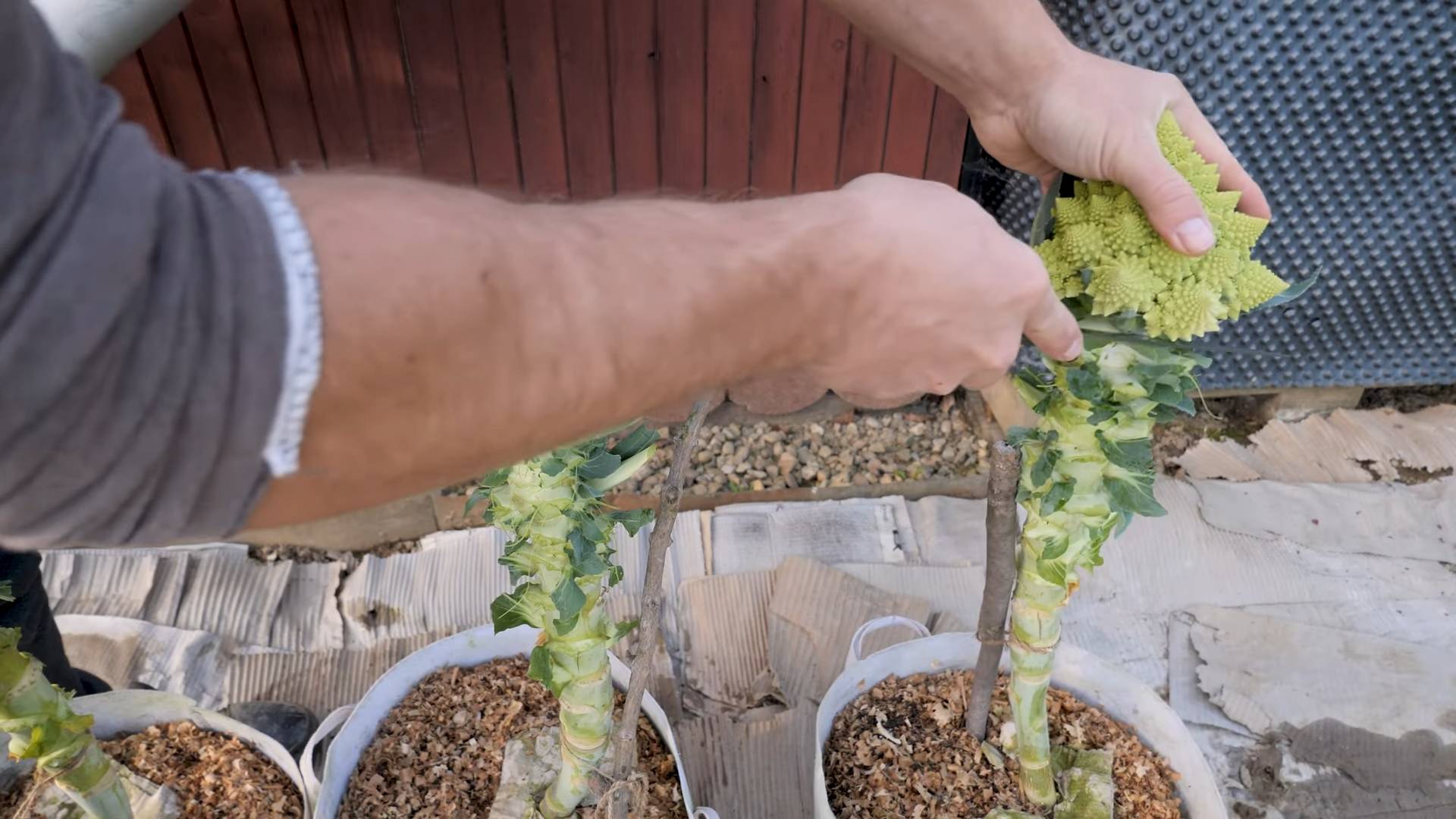
Growing Romanesco Cauliflower: A Step-by-Step Guide to Fractal Fun!
Okay, friends, let’s dive into the fascinating world of Romanesco cauliflower! This isn’t your average veggie; it’s a mathematical marvel, a culinary delight, and a rewarding challenge for any gardener. I’m going to walk you through everything you need to know to successfully grow your own head of this beautiful, fractal-patterned vegetable.
Understanding Romanesco
Before we get our hands dirty, let’s talk a little about what makes Romanesco so special. It’s a type of cauliflower, but its lime-green florets form a naturally repeating logarithmic spiral. Pretty cool, right? It has a slightly nutty, milder flavor than regular cauliflower, making it a delicious addition to your meals.
Planning Your Romanesco Garden
Success with Romanesco starts with careful planning. Here’s what you need to consider:
* Timing is Key: Romanesco is a cool-season crop. This means you’ll want to plant it either in early spring or late summer for a fall harvest. Hot weather can cause the heads to bolt (go to seed) or develop poorly. I’ve found that aiming for a harvest when temperatures are consistently below 75°F (24°C) works best.
* Sunlight: Romanesco needs at least 6 hours of direct sunlight per day. Choose a location in your garden that gets plenty of sunshine.
* Soil: Well-drained, fertile soil is essential. Romanesco is a heavy feeder, so you’ll want to amend your soil with plenty of compost or well-rotted manure. A slightly acidic to neutral pH (around 6.0-7.0) is ideal.
* Space: Give your Romanesco plants plenty of room to grow. I recommend spacing them about 18-24 inches apart in rows that are 24-36 inches apart. This allows for good air circulation and prevents overcrowding.
* Variety Selection: While there aren’t a ton of Romanesco varieties, make sure you choose one that’s suited to your climate and growing season. Some varieties mature faster than others, so pay attention to the days to maturity listed on the seed packet.
Starting Your Romanesco Seeds
You can either start your Romanesco seeds indoors or direct sow them in your garden. I prefer starting them indoors because it gives them a head start and protects them from pests and diseases.
Starting Seeds Indoors:
1. Gather Your Supplies: You’ll need seed starting trays or pots, seed starting mix, Romanesco seeds, a spray bottle, and a grow light (optional, but highly recommended).
2. Sow the Seeds: Fill your seed starting trays or pots with seed starting mix. Moisten the mix with a spray bottle. Sow the Romanesco seeds about 1/4 inch deep and gently cover them with soil.
3. Provide Warmth and Light: Place the trays or pots in a warm location (around 70-75°F or 21-24°C). If you’re using a grow light, position it a few inches above the seedlings.
4. Keep the Soil Moist: Water the seedlings regularly with a spray bottle to keep the soil moist but not soggy.
5. Harden Off the Seedlings: About a week before you plan to transplant the seedlings into your garden, you’ll need to harden them off. This means gradually exposing them to outdoor conditions. Start by placing them outside for a few hours each day, gradually increasing the amount of time they spend outdoors.
Direct Sowing Seeds:
1. Prepare the Soil: Make sure the soil is well-drained and amended with compost or manure.
2. Sow the Seeds: Sow the Romanesco seeds about 1/4 inch deep and space them according to the recommendations above.
3. Water Regularly: Keep the soil moist until the seeds germinate.
4. Thin the Seedlings: Once the seedlings have a few true leaves, thin them to the strongest plant in each location.
Transplanting Romanesco Seedlings
Once your seedlings have developed a few true leaves and have been hardened off (or if your direct-sown seedlings are strong), it’s time to transplant them into your garden.
1. Prepare the Planting Holes: Dig holes that are slightly larger than the root balls of the seedlings. Space the holes 18-24 inches apart in rows that are 24-36 inches apart.
2. Transplant the Seedlings: Gently remove the seedlings from their trays or pots. Loosen the roots slightly and place the seedlings in the planting holes.
3. Fill the Holes: Fill the holes with soil and gently firm the soil around the seedlings.
4. Water Thoroughly: Water the seedlings thoroughly after transplanting.
5. Mulch: Apply a layer of mulch around the plants to help retain moisture and suppress weeds. I like to use straw or shredded leaves.
Caring for Your Romanesco Plants
Now that your Romanesco plants are in the ground, it’s time to provide them with the care they need to thrive.
1. Watering: Romanesco needs consistent moisture, especially during head formation. Water deeply and regularly, especially during dry spells. Aim for about 1-1.5 inches of water per week.
2. Fertilizing: As I mentioned earlier, Romanesco is a heavy feeder. Fertilize your plants every 2-3 weeks with a balanced fertilizer or a fertilizer that’s high in nitrogen and phosphorus. I like to use fish emulsion or compost tea.
3. Weeding: Keep the area around your Romanesco plants free of weeds. Weeds can compete with your plants for nutrients and water.
4. Pest Control: Romanesco can be susceptible to a few pests, including cabbage worms, aphids, and flea beetles. Inspect your plants regularly for signs of pests and take action if necessary. I prefer to use organic pest control methods, such as insecticidal soap or neem oil. You can also cover your plants with row covers to prevent pests from reaching them.
5. Disease Prevention: Romanesco can also be susceptible to a few diseases, such as black rot and clubroot. To prevent diseases, make sure your plants have good air circulation and avoid overhead watering. If you notice any signs of disease, remove the affected leaves or plants immediately. Crop rotation is also important to prevent soilborne diseases.
Harvesting Your Romanesco
The moment you’ve been waiting for! Harvesting your Romanesco is the most rewarding part of the process.
1. Timing: Romanesco is typically ready to harvest about 75-100 days after planting, depending on the variety. The head should be firm and compact, and the florets should be tightly closed.
2. Harvesting: Use a sharp knife to cut the head from the plant, leaving a few inches of stem attached.
3. Storage: Store your Romanesco in the refrigerator for up to a week.
Troubleshooting
Even with the best planning and care, you might encounter some challenges when growing Romanesco. Here are a few common problems and how to address them:
* Bolting: Bolting (premature flowering) can occur if the weather gets too hot. To prevent bolting, plant your Romanesco at the right time of year and provide shade during hot weather.
* Small Heads: Small heads can be caused by a lack of nutrients or water. Make sure you’re fertilizing and watering your plants regularly.
* Pest Infestations: As mentioned earlier, Romanesco can be susceptible to pests. Inspect your plants regularly and take action if necessary.
* Disease Problems: Disease problems can be prevented by providing good air circulation, avoiding overhead watering, and practicing crop rotation.
Enjoying Your Homegrown Romanesco
Now that you’ve harvested your beautiful Romanesco, it’s time to enjoy it! You can eat it raw, steamed, roasted, or added to soups and stews. Its unique flavor and texture make it a delicious and nutritious addition to any meal. I personally love roasting it with a little olive oil, garlic, and parmesan cheese.
Growing Romanesco cauliflower is a rewarding experience that allows you to connect with nature and enjoy the fruits (or vegetables!) of your labor. With a little planning and care, you can successfully grow your own head of this beautiful and delicious vegetable. Happy gardening!
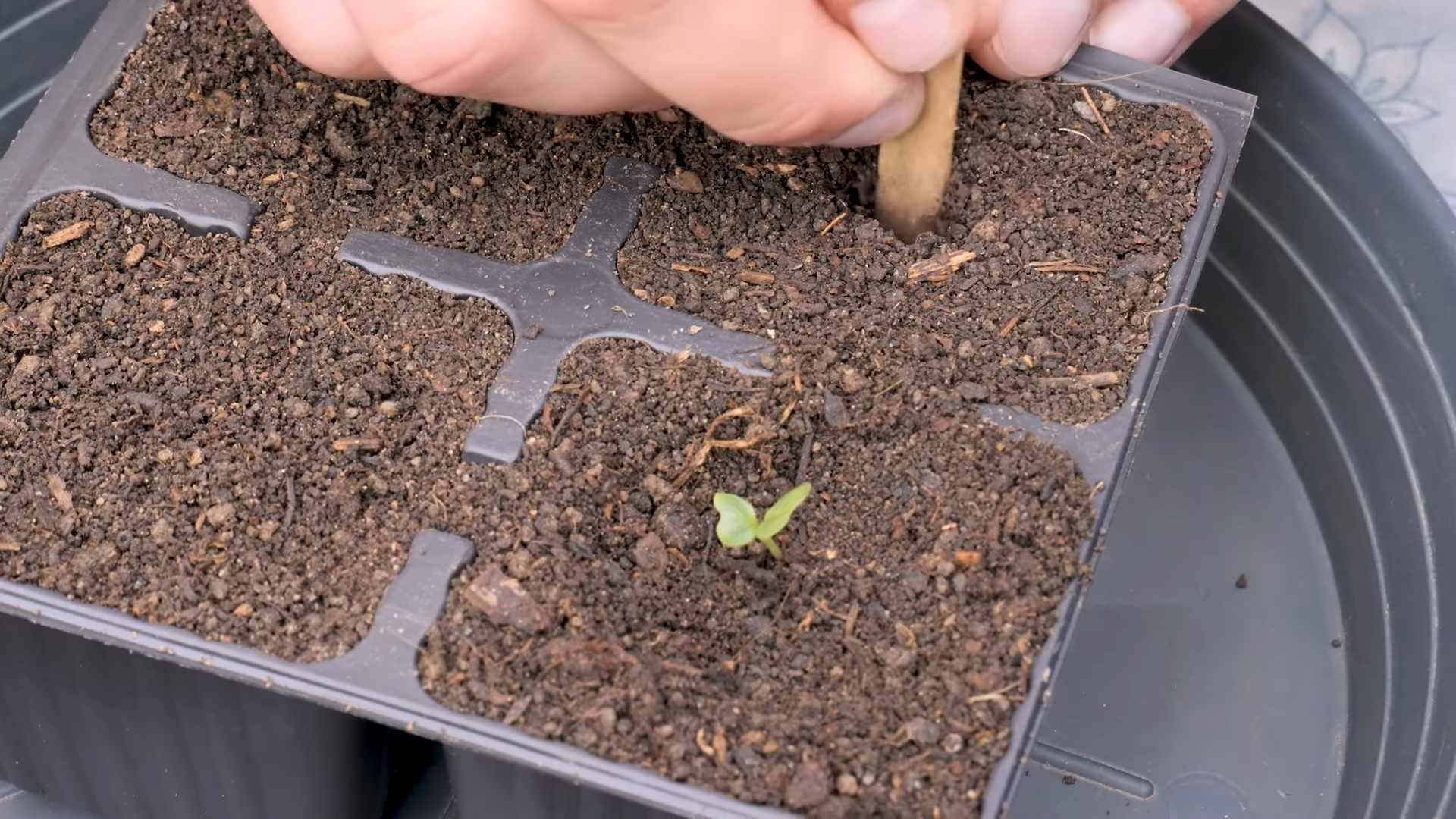
Conclusion
So, there you have it! Growing Romanesco cauliflower at home might seem a little daunting at first, but with the right knowledge and a little patience, you can cultivate this stunning and delicious vegetable right in your own backyard. The unique fractal pattern and nutty flavor of homegrown Romanesco are simply unmatched by anything you can find in the grocery store. Think about the pride you’ll feel serving a dish featuring a vegetable you nurtured from seed to table!
This isn’t just about growing a vegetable; it’s about connecting with nature, understanding the growing process, and enjoying the fruits (or rather, the florets) of your labor. The satisfaction of harvesting your own Romanesco, knowing exactly where it came from and how it was grown, is a reward in itself. Plus, you’ll be reducing your carbon footprint by avoiding the transportation and packaging associated with store-bought produce.
But the benefits don’t stop there. Growing your own Romanesco allows you to experiment with different varieties and techniques. Perhaps you’d like to try a purple Romanesco for an even more visually striking dish? Or maybe you’ll want to experiment with companion planting to deter pests naturally. The possibilities are endless!
Don’t be afraid to experiment! Try different soil amendments, watering schedules, and pest control methods to find what works best for your specific climate and growing conditions. Consider starting your seeds indoors to get a head start on the growing season, especially if you live in a cooler climate. And remember, even if your first attempt isn’t perfect, don’t give up! Gardening is a learning process, and every mistake is an opportunity to improve.
We highly encourage you to give this DIY trick a try. Imagine the vibrant colors and textures you can add to your meals with your own homegrown Romanesco. Picture the impressed faces of your friends and family when you serve them a dish featuring this unique and beautiful vegetable.
And most importantly, we want to hear about your experience! Share your photos, tips, and challenges in the comments below. Let’s create a community of Romanesco growers and learn from each other. Together, we can unlock the secrets to successfully cultivating this fascinating vegetable and enjoy the many rewards it has to offer. Embrace the challenge, get your hands dirty, and discover the joy of growing your own Romanesco cauliflower. You won’t regret it!
Frequently Asked Questions (FAQ)
Q: How much space does Romanesco cauliflower need to grow?
A: Romanesco cauliflower plants require a fair amount of space to thrive. Ideally, you should space them about 18-24 inches apart in rows that are 24-36 inches apart. This allows for adequate air circulation and sunlight penetration, which are crucial for healthy growth and preventing diseases. If you’re growing in containers, choose pots that are at least 12 inches in diameter and depth to accommodate the plant’s root system. Remember that overcrowding can lead to smaller heads and increased susceptibility to pests and diseases.
Q: What kind of soil is best for growing Romanesco cauliflower?
A: Romanesco cauliflower thrives in well-drained, fertile soil that is rich in organic matter. The ideal soil pH should be between 6.0 and 7.0. Before planting, amend your soil with compost, well-rotted manure, or other organic materials to improve its fertility and drainage. If your soil is heavy clay, consider adding sand or perlite to improve drainage. A soil test can help you determine the specific nutrient deficiencies in your soil and guide you in choosing the appropriate amendments.
Q: How often should I water my Romanesco cauliflower plants?
A: Romanesco cauliflower requires consistent moisture, especially during head formation. Water deeply and regularly, aiming to keep the soil consistently moist but not waterlogged. A good rule of thumb is to water when the top inch of soil feels dry to the touch. During hot, dry weather, you may need to water more frequently. Mulching around the plants can help retain moisture and suppress weeds. Avoid overhead watering, as this can increase the risk of fungal diseases. Drip irrigation is an excellent option for providing consistent moisture directly to the roots.
Q: What are some common pests and diseases that affect Romanesco cauliflower?
A: Romanesco cauliflower is susceptible to several common pests and diseases, including cabbage worms, aphids, flea beetles, clubroot, and black rot. Regularly inspect your plants for signs of infestation or disease. Cabbage worms can be controlled with Bacillus thuringiensis (Bt), a biological insecticide. Aphids can be washed off with a strong stream of water or treated with insecticidal soap. Flea beetles can be deterred with row covers. Clubroot is a soilborne disease that can be prevented by maintaining a proper soil pH and practicing crop rotation. Black rot is a bacterial disease that can be prevented by using disease-free seeds and avoiding overhead watering.
Q: When is the best time to harvest Romanesco cauliflower?
A: Romanesco cauliflower is typically ready to harvest 75-85 days after transplanting. The head should be firm, compact, and have a vibrant green color. The individual florets should be tightly packed together and not starting to separate. Use a sharp knife to cut the head from the plant, leaving a few leaves attached. Harvest in the morning when the plant is cool and hydrated.
Q: Can I grow Romanesco cauliflower in containers?
A: Yes, Romanesco cauliflower can be successfully grown in containers, provided you choose a large enough pot (at least 12 inches in diameter and depth) and use a well-draining potting mix. Container-grown plants may require more frequent watering and fertilization than those grown in the ground. Place the container in a sunny location that receives at least 6 hours of direct sunlight per day.
Q: How can I prevent my Romanesco cauliflower from bolting (going to seed)?
A: Bolting, or premature flowering, can occur when Romanesco cauliflower plants are exposed to stress, such as extreme temperatures or inconsistent watering. To prevent bolting, choose a variety that is well-suited to your climate, provide consistent moisture, and protect the plants from extreme heat or cold. Mulching around the plants can help regulate soil temperature and retain moisture.
Q: What are some good companion plants for Romanesco cauliflower?
A: Companion planting can help deter pests, attract beneficial insects, and improve the overall health of your Romanesco cauliflower plants. Some good companion plants include:
* **Aromatic herbs:** Rosemary, thyme, and sage can help repel cabbage moths and other pests.
* **Marigolds:** These flowers attract beneficial insects and deter nematodes.
* **Nasturtiums:** These flowers attract aphids away from your Romanesco cauliflower.
* **Legumes:** Beans and peas can fix nitrogen in the soil, benefiting the cauliflower plants.
* **Onions and garlic:** These plants can help deter pests and diseases.
Q: Can I save seeds from my Romanesco cauliflower?
A: Saving seeds from Romanesco cauliflower is possible, but it requires allowing the plant to flower and produce seeds, which can take a significant amount of time and effort. Romanesco cauliflower is an open-pollinated variety, so the seeds will generally produce plants that are true to type. However, cross-pollination with other brassicas (such as broccoli or cabbage) can occur, so it’s important to isolate your Romanesco cauliflower plants from other brassicas during flowering to ensure seed purity.

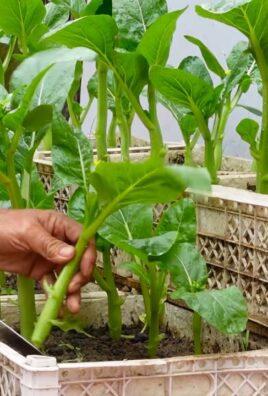
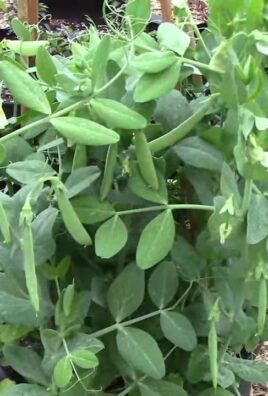
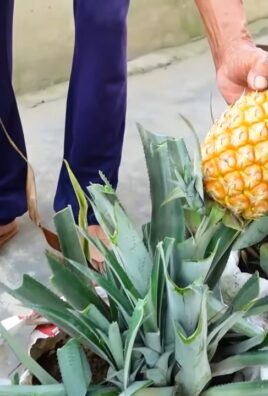
Leave a Comment